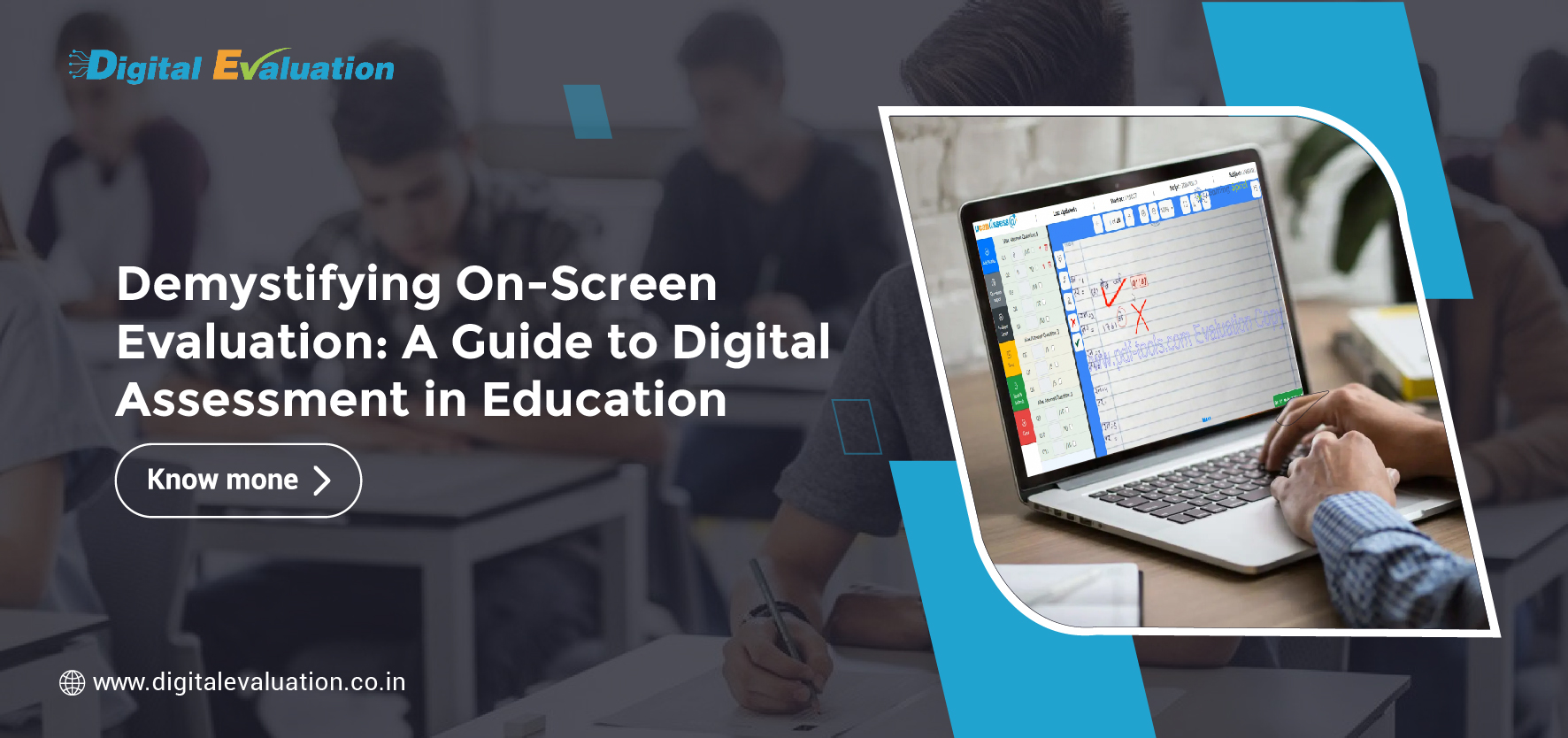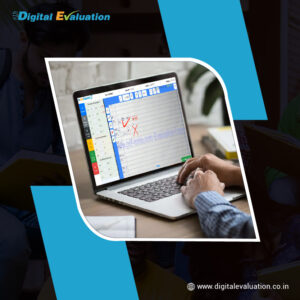
The traditional classroom assessment landscape is undergoing a significant transformation. Paper-based tests and the laborious task of manual grading are gradually being replaced by digital evaluation, with on-screen marking emerging as a central pillar of this shift.
This article aims to demystify on-screen evaluation, exploring its benefits, functionalities, and considerations for educators seeking to embrace digital assessment in their classrooms.
What is On-Screen Evaluation?
On-screen evaluation, also known as on-screen marking, refers to the process of using digital tools and platforms to electronically grade assessments. These assessments can take various formats, including multiple-choice questions, open-ended responses, essays, and even presentations or video projects.
The on-screen evaluation platform grades objective questions automatically, while educators can utilize digital tools for efficient marking of subjective responses.
Benefits of On-Screen Evaluation:
The transition to digital evaluation offers several advantages for both educators and students:
- Increased Efficiency:
On-screen grading eliminates the time-consuming and tedious process of manual scoring. Educators can dedicate more time to providing personalized feedback and supporting student learning.
- Improved Accuracy:
Digital platforms can automatically grade objective questions, reducing the risk of human error and ensuring consistency in marking.
- Enhanced Feedback:
On-screen evaluation tools often offer features like rubrics integration, annotation capabilities, and voice feedback options. This allows educators to provide more specific and constructive feedback to students.
- Real-Time Insights:
Digital platforms can offer immediate results for objective assessments. This allows students to receive instant feedback and adapt their learning strategies accordingly.
- Data Analysis and Reporting:
On-screen evaluation platforms can generate detailed reports on student performance. These insights can be valuable for educators to track progress, identify learning trends, and tailor their teaching approaches.
Functionalities of On-Screen Evaluation Platforms:
A variety of on-screen evaluation platforms are available, each with its own set of features. Common functionalities include:
- Question Bank Management: Create and manage a library of different question types for building diverse assessments.
- Test Delivery and Administration: Securely deliver online assessments to students and monitor test-taking activity.
- Automatic Grading: Efficiently grade objective questions with automatic scoring algorithms.
- Open-Ended Response Marking: Utilize tools like rubrics, annotation features, and voice comments to provide rich feedback on essays or other subjective work.
- Data Analysis and Reporting: Generate reports to analyze student performance across various metrics and identify learning gaps.
Considerations for Educators:
While on-screen evaluation offers numerous benefits, some considerations deserve attention when implementing digital assessment in the classroom:
- Technology Access: Ensure all students have access to the necessary technology and internet connectivity to participate in online assessments.
- Digital Literacy: Students may require training or support to become familiar with the on-screen evaluation platform and how to navigate digital assessments effectively.
- Formative vs. Summative Assessment: Utilize on-screen evaluation for both formative and summative assessments. Use immediate feedback from objective assessments for formative purposes, and complement on-screen grading with individual feedback on subjective tasks for summative assessment.
- Data Privacy: Choose a platform that prioritizes data security and ensures student privacy protocols are strictly adhered to.
Conclusion:
On-screen evaluation is a powerful tool that can revolutionize assessment practices in education. By understanding its benefits, functionalities, and considerations, educators can leverage digital tools to create a more efficient, accurate, and insightful assessment experience that fosters student learning and growth.
Embracing on-screen evaluation as part of a comprehensive digital assessment strategy leads to a future where educators spend less time grading and more time guiding, inspiring, and empowering their students.



